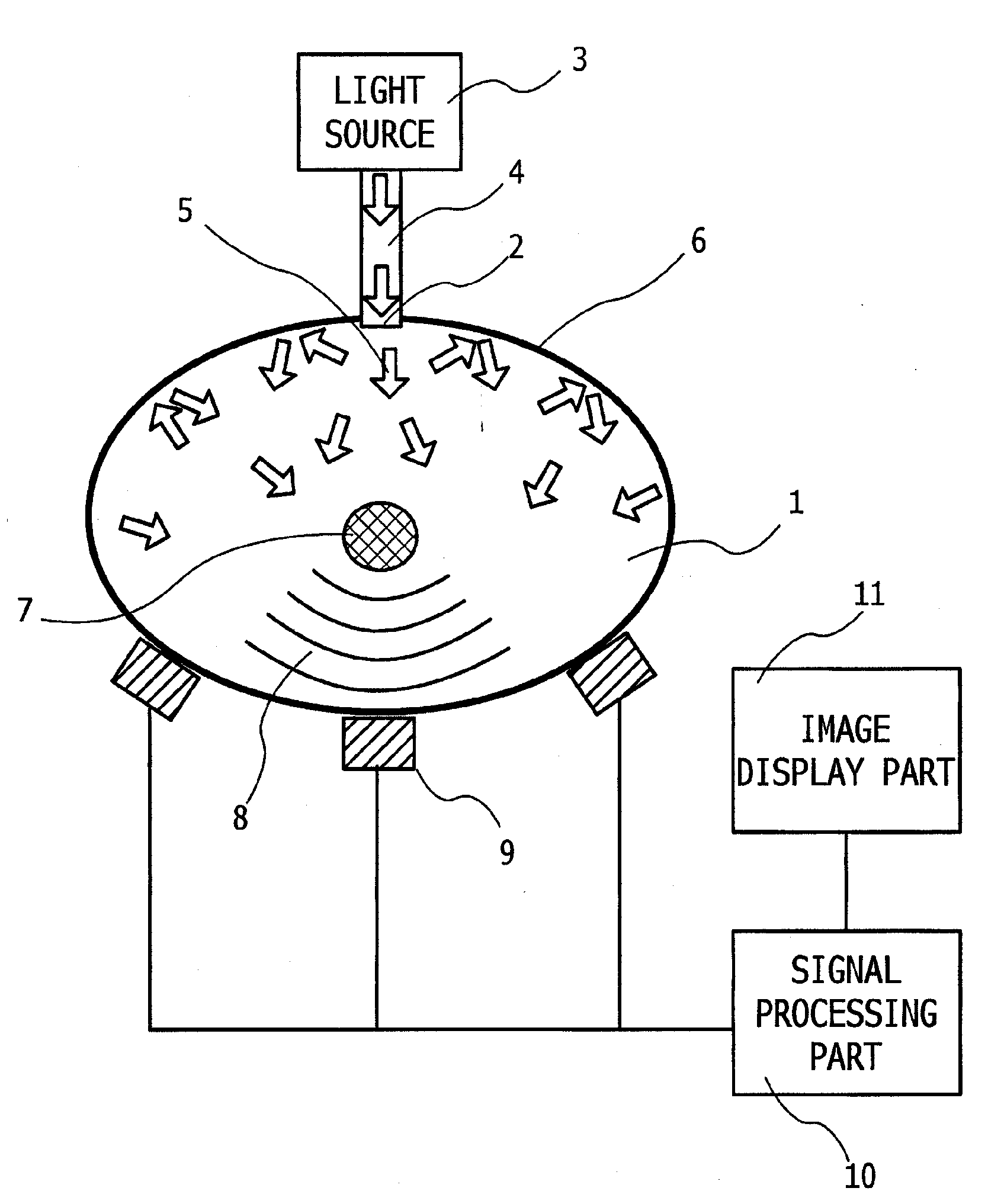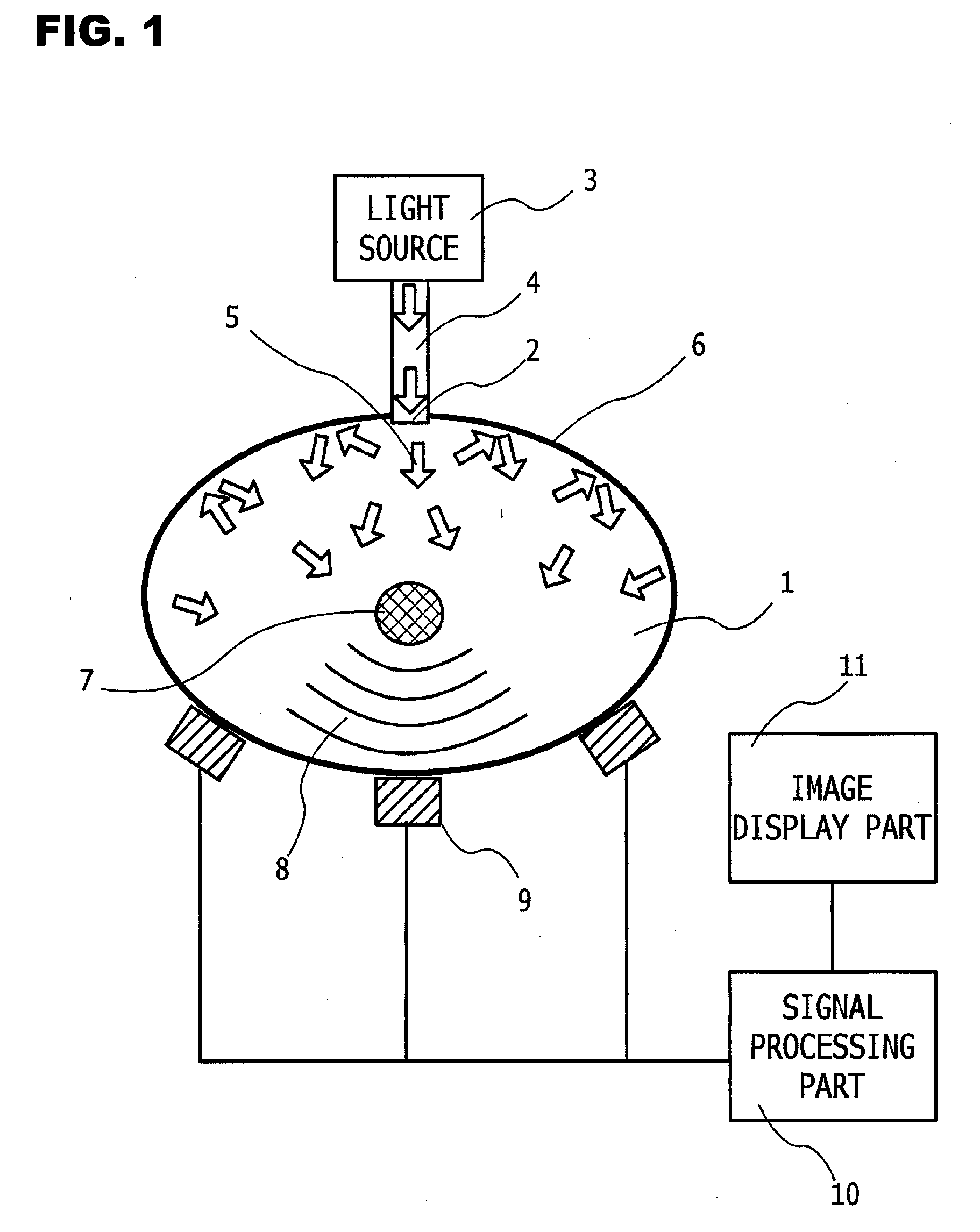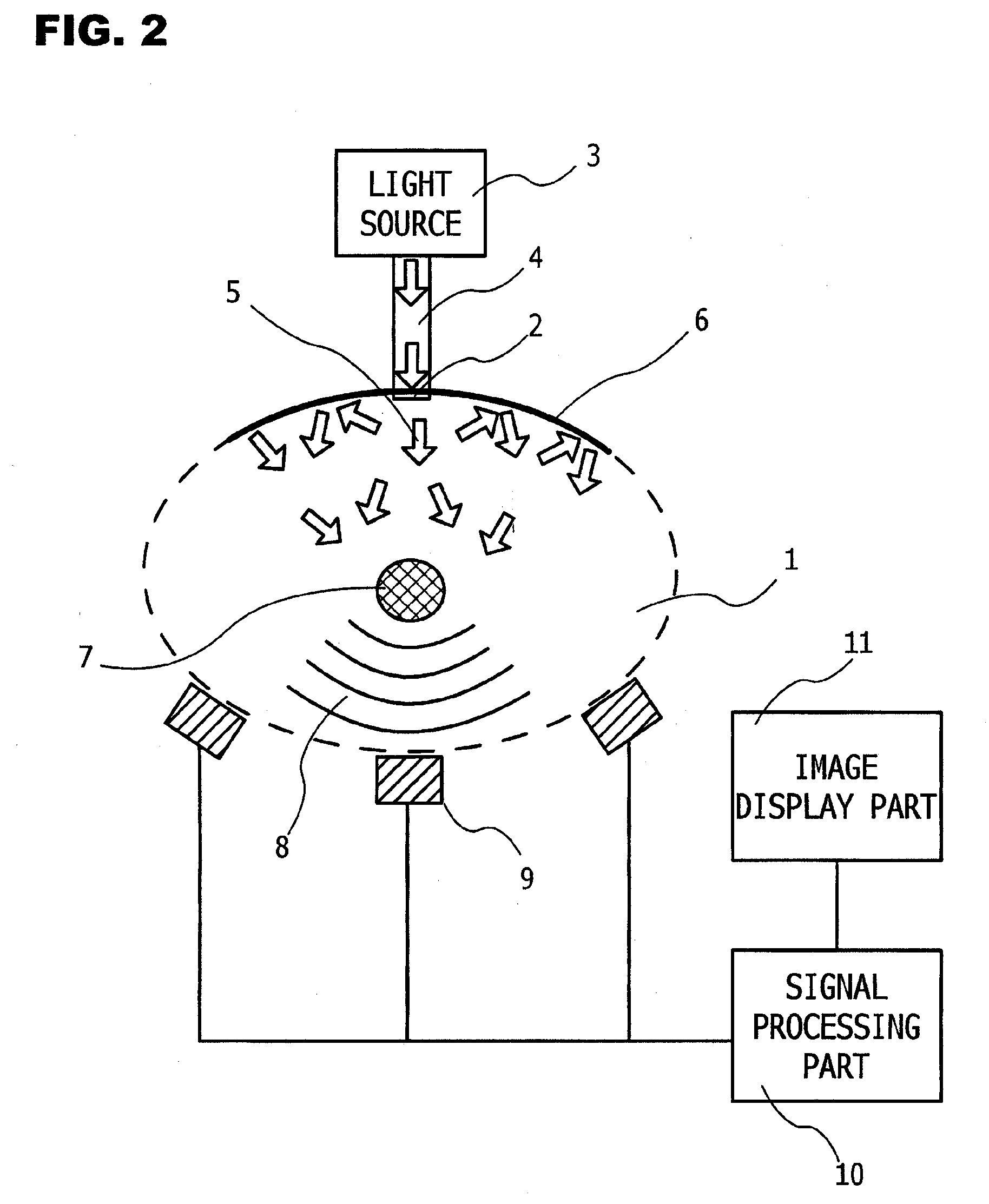Photoacoustic Apparatus, and Probe for Receiving Photoacoustic Waves
a technology of photoacoustic waves and probes, which is applied in the direction of instruments, ultrasonic/sonic/infrasonic image/data processing, fluorescence/phosphorescence, etc., can solve the problems of difficult to provide a large amount of light to a deep tissue in the living body, difficult to obtain information on a deep portion of a specimen, and rapid attenuation of light irradiated to the specimen. , to achieve the effect of improving
- Summary
- Abstract
- Description
- Claims
- Application Information
AI Technical Summary
Benefits of technology
Problems solved by technology
Method used
Image
Examples
first embodiment
Fundamental Configuration
[0037]FIG. 1 shows a view explaining an example of the construction of a biological information imaging apparatus in a first embodiment of the present invention. In FIG. 1, a reference numeral 1 denotes a living body as a specimen, 2 a light radiation point, 3 a light source, 4 an optical fiber, 5 light propagating in the living body, 6 a light reflection member, 7 a light absorber, 8 an acoustic wave, and 9 acoustic wave receivers. In addition, the biological information imaging apparatus can include a signal processing part 10 and an image display part 11, which, however, may be provided separately.
[0038]The biological information imaging apparatus of this embodiment makes it possible to image the concentration distribution of substances forming a living body tissue obtained from optical property values in the living body and their information for diagnosis of a malignant tumor, a vascular disease, etc., and for the follow-up of a chemical treatment, etc.
[...
second embodiment
Probe
[0057]Next, reference will be made to another embodiment of the present invention in which a construction example of the above-mentioned probe that can realize effective use of light and a biological information processing apparatus using such a probe, while using the accompanying drawings. In this embodiment, it is featured that a light reflection member is provided on a probe which includes an acoustic wave receiver. FIG. 5 illustrates a view explaining the construction example of the biological information processing apparatus in this embodiment.
[0058]The biological information processing apparatus of this embodiment makes it possible to image optical property values in a living body and the concentration distribution of substances that constitutes the living body tissue obtained from the information of these, for diagnosis of a malignant tumor, a vascular disease, etc., and for the follow-up of a chemical treatment, etc.
[0059]The biological information processing apparatus ...
first example
[0082]As a first example, a simulation was made in which a reflection member having a reflection factor of 100% was used as a reflection member which constitutes part of a biological information imaging apparatus. A case was taken in which light was caused to enter a cube with a side of 4 cm imitating a living body. The simulation calculated a well-known optical diffusion equation by means of a finite element method. For optical constants in the cube, an absorption coefficient was set to 0.1 [cm−1], and an effective scattering coefficient was set to 10 [cm−1]. A circular-shaped continuous light having a diameter of 1 mm was irradiated to the center of a bottom surface of the cube (the center of a square) at 10 mW. A boundary condition was set such that in the case of the presence of the reflection member, diffused light is totally reflected (a reflection factor of 100%), and in the case of the absence of the reflection member, diffused light substantially totally transmits or passes...
PUM
| Property | Measurement | Unit |
|---|---|---|
| refractive index | aaaaa | aaaaa |
| width | aaaaa | aaaaa |
| width | aaaaa | aaaaa |
Abstract
Description
Claims
Application Information
 Login to View More
Login to View More - R&D
- Intellectual Property
- Life Sciences
- Materials
- Tech Scout
- Unparalleled Data Quality
- Higher Quality Content
- 60% Fewer Hallucinations
Browse by: Latest US Patents, China's latest patents, Technical Efficacy Thesaurus, Application Domain, Technology Topic, Popular Technical Reports.
© 2025 PatSnap. All rights reserved.Legal|Privacy policy|Modern Slavery Act Transparency Statement|Sitemap|About US| Contact US: help@patsnap.com



